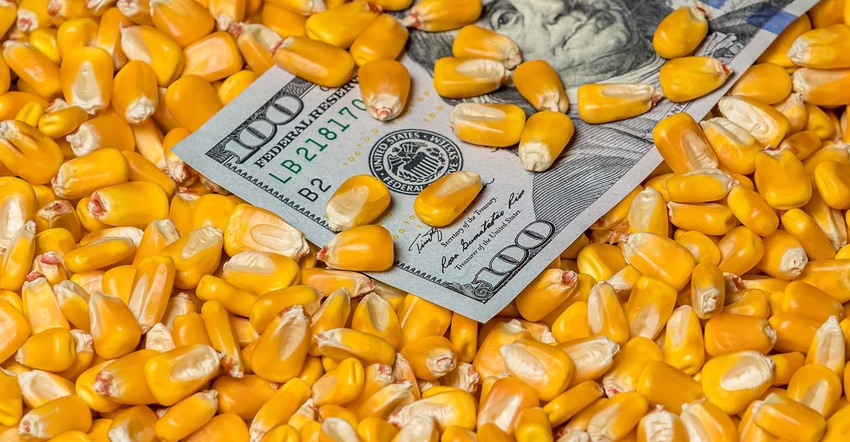
The March 9 USDA WASDE report was overall neutral for corn regarding short-term price impact. But the long-term implications continue to support prices.
USDA cut ending stocks for both U.S. and global corn supplies within the range of expectations. As much of the information released was priced into the market already, corn futures did not have a reason to break out of the current trading ranges higher, or lower.
Looking at specifics for the USDA report, the agency increased demand for ethanol by 25 million bushels as well as increased demand for corn for export by a whopping 75 million bushels due to the war in Ukraine. The result was ending stocks shrinking by 100 million bushels, now pegged at 1.44 billion bushels.
From a global perspective, USDA pegged Brazil's 2021/22 corn production at 114 million tonnes vs. an average expectation of 112.60 million (range 110.00-116.10 million) and unchanged from February. Traders will watch the weather in Brazil closely over the coming weeks as second crop corn production and growth is underway.
For Brazil, 70% of its entire corn crop is a result of this second crop production, and the world needs Brazil to have a big crop. If there are signs of production hiccups, corn futures prices will respond quickly.
Navigate the noise
What’s ahead? Corn futures will need to navigate the noise of potential sudden demand shifts or production concerns as the U.S. crop is not yet in the ground. Planted acres are still uncertain, both spring and summer weather must be contended with, and we still have supply concerns over inputs like fertilizer or weed killers.
For the short term, more sideways consolidation price action seems likely, at least until the March 31 Prospective Plantings report and Quarterly Stocks report.
The bottom line is that old crop corn futures have solid support at $7 for now, yet no reason at the moment to climb higher than $8.00.
How could that happen? Continued struggles occur in Ukraine, poor weather issues for Brazil’s second crop corn, or weather hiccups here in the United States. Those factors could cause May or July futures to have a fundamental reason to trade above $8 per bushel.
Yet, be aware. The technical swing chart objective potentially points to $10 futures.
New crop December 2022 corn futures are well supported at the $6 area, with resistance at $6.50 for now. Should the market price be able to push through $6.50, the upside is a quick run to $7 to fill a gap on a continuous weekly December futures chart.
At some point, high prices will cure high prices, but for now, the trend is up.
Reach Naomi Blohm: 800-334-9779 Twitter: @naomiblohm and [email protected].
Disclaimer: The data contained herein is believed to be drawn from reliable sources but cannot be guaranteed. Individuals acting on this information are responsible for their own actions. Commodity trading may not be suitable for all recipients of this report. Futures and options trading involve significant risk of loss and may not be suitable for everyone. Therefore, carefully consider whether such trading is suitable for you in light of your financial condition. No representation is being made that scenario planning, strategy or discipline will guarantee success or profits. Any decisions you may make to buy, sell or hold a futures or options position on such research are entirely your own and not in any way deemed to be endorsed by or attributed to Total Farm Marketing. Total Farm Marketing and TFM refer to Stewart-Peterson Group Inc., Stewart-Peterson Inc., and SP Risk Services LLC. Stewart-Peterson Group Inc. is registered with the Commodity Futures Trading Commission (CFTC) as an introducing broker and is a member of National Futures Association. SP Risk Services, LLC is an insurance agency and an equal opportunity provider. Stewart-Peterson Inc. is a publishing company. A customer may have relationships with all three companies. SP Risk Services LLC and Stewart-Peterson Inc. are wholly owned by Stewart-Peterson Group Inc. unless otherwise noted, services referenced are services of Stewart-Peterson Group Inc. Presented for solicitation.
The opinions of the author are not necessarily those of Farm Futures or Farm Progress.
About the Author(s)
You May Also Like






